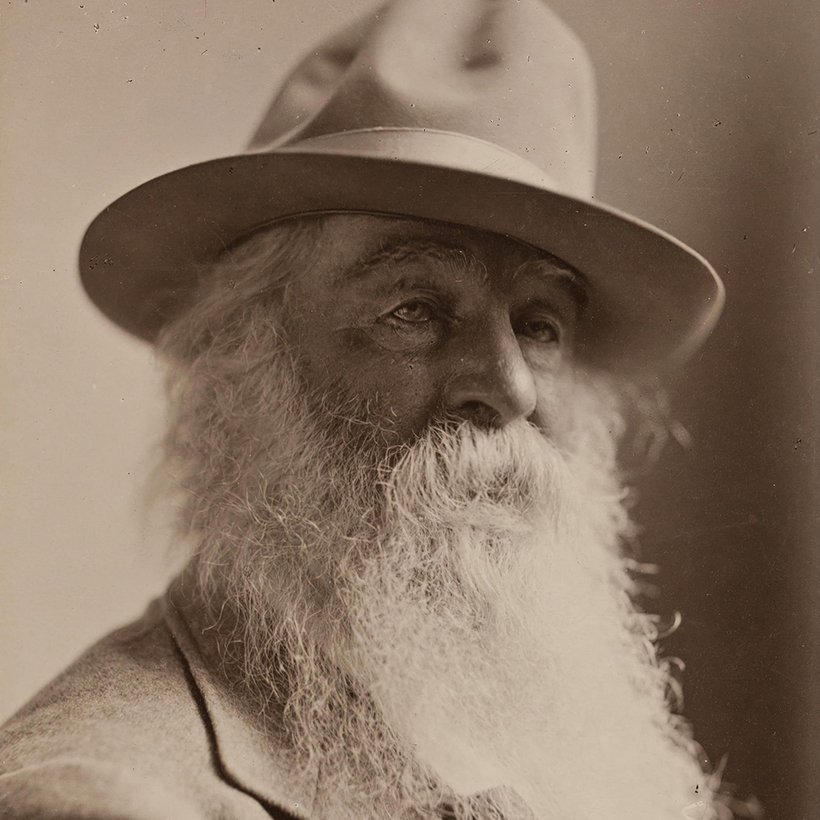Just last year, I’m amazed to say, Norton published a new book of mine, What Is the Grass: Walt Whitman in My Life. “Amazed” not because Norton was willing to publish an admittedly odd hybrid of biography, memoir, cultural history, literary criticism, and meditation, but by two things that have surprised me about this book, each quite unlike any experience I’ve had with other volumes.
First, I finished it, which was by no means a given. Twenty years ago, after I published a couple of essays on Whitman’s poems, a friend said, “Oh, you’re writing a book on Whitman.” In all honesty, this had not occurred to me, but the moment I heard it, I felt that it was true. For a year and a half, I read everything on the poet I could find, until I knew I could take in no more.
It’s remarkable what happens to a fascination given sustained attention. I can’t help but think of Proust—all of Combray opening out, he tells us, like one of the shells dropped in water from which unfurl an unexpected flourish of bloom. In my imagination, my obsession seemed to open into a house, one I could not see all at once, and perhaps never would. Instead, I could move from one room to the next, startled by what was there: Isadora Duncan or a trio of engravings (Bacchus, a satyr, and Hercules) Whitman had mounted on his bedroom wall in Brooklyn. Or a room in Camden, its floor a foot deep in scattered papers.
“Oh, you’re writing a book on Whitman.” In all honesty, this had not occurred to me, but the moment I heard it, I felt that it was true.
I wrote more essays—on my first, youthful marriage, and on the unsayable, what Whitman called “the buds beneath speech.” How did these pieces talk to each other? In 2008, I sold the book to Norton with a proposal and a sample, and set out to write … what? I found that I had to first somehow encompass my subject, to scale Mount Whitman, so to speak, so I wrote a huge, baggy draft, so capacious that even I couldn’t remember what was in it. At least three or four more would follow. They blurred into each other, and more than once I stopped in the middle and re-wrote from the beginning.
If the apt figure for my obsession were still a house, it now was one of those mansions built by wealthy eccentrics who have no need for practicality; there were stairs that went nowhere, lovingly detailed alcoves in otherwise unfinished rooms. I’d wanted to make something shapely, but as my obsession with the poet grew, I wasn’t at all sure I could. At the heart of my obsession was a simple question: How did he do it?
Whitman’s Way
“I contain multitudes,” he wrote, and his poems do, too. He celebrates the throngs surging on Broadway, passengers crowding onto the Brooklyn Ferry—the diversely populous American scene. But his wide-angle vision feels intimate, too, flush with feeling as he seems to reach out to his readers individually, as though he could push right through the printed page between us and speak to each person directly. How can a poet do this, and how could I ever write anything commensurate with his achievement?
Years passed. It was during the last two, returning to the manuscript after finding myself ready to give up, that something happened. I began to hear, in the passages I liked best, a voice. It was a warm, available one, nearly always affirmative. I’d like to think that humor and a raised eyebrow kept it from being tiresomely earnest, but what that voice most wanted was to put these poems in readers’ hands, to open doors to them.
I let the voice lead me. The voice established a tone, and that tone led me to a through line for my book, in the form of a question that could compel me and my reader forward. Where did these unprecedented poems come from?
“I contain multitudes,” he wrote, and his poems do, too.
So, 11 years after my patient editor bought the book, I turned it in. This leads to my second surprise. By this point in the life of any other book of mine, I have grown utterly sick of the thing, certain I could have done better, and have finally accepted that these poor words were all I could manage to catch of the shining, unreachable ones within. But I don’t feel this way.
It’s not perfect—any salvo at a comprehensive response to a great poet will always remain incomplete, as it should be. Poems as good as Whitman’s best—which is to say as good as those of Dante, Shakespeare, Keats, and Dickinson—go on accumulating meaning. We don’t exhaust them. And writing this book, once I finally figured out how to write it, has energized and delighted me.
Mark Doty is the author of several books. What Is the Grass: Walt Whitman in My Life is out now

